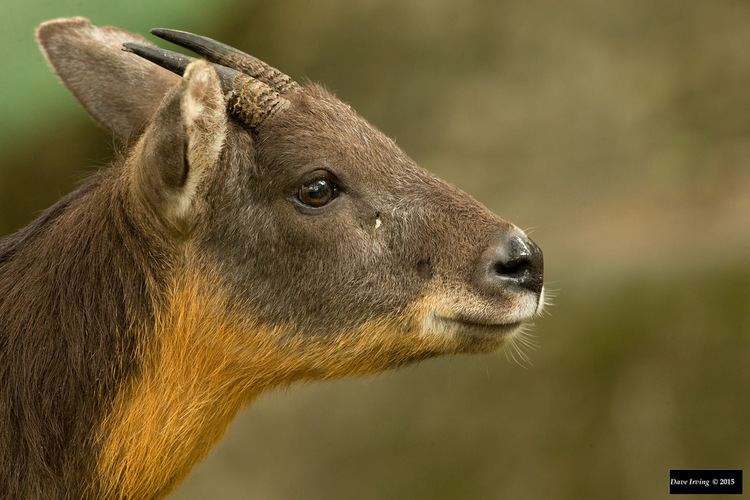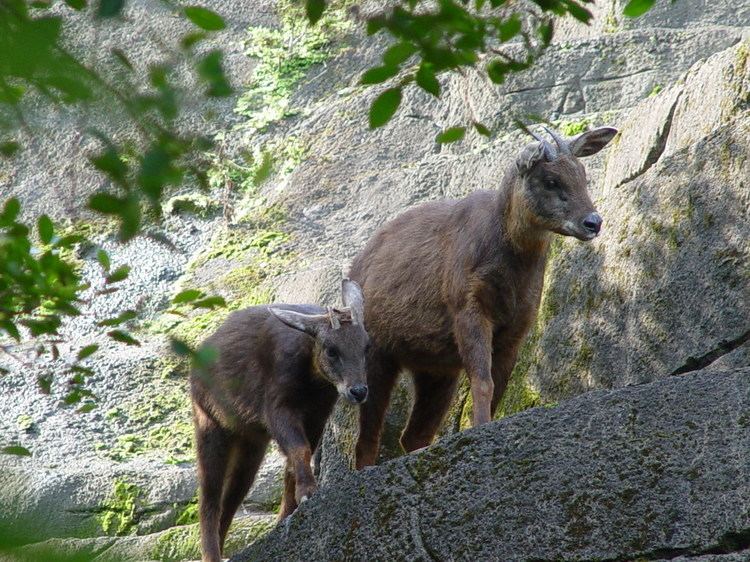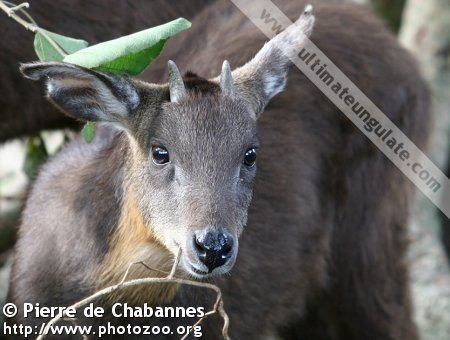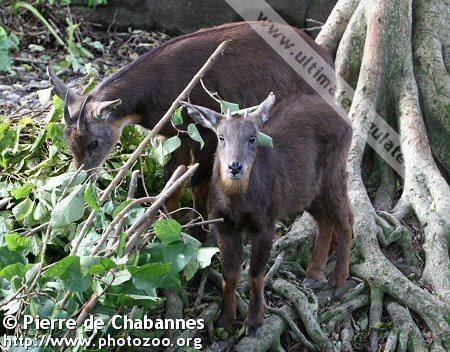Order Artiodactyla Scientific name Capricornis swinhoei Rank Species | Phylum Chordata Genus Capricornis Higher classification Serow | |
 | ||
Similar Red goral, Serow, Sumatran serow, Goral, Himalayan serow | ||
The Taiwan serow (Capricornis swinhoei or Naemorhedus swinhoei) also known as the Formosan serow, is a small bovid endemic to the main island of Taiwan.
Contents

Physical characteristics

Its torso length is 80–114 cm (31–45 in) and weight 25–35 kg (55–77 lb). Its tail is short, which measures about 6.5 cm. Its color is dark tan with yellow spots on the jaw, throat and nape.

Both sexes bear horns that curve slightly backward and measure 10–20 centimeters in length. The horns are conical in shape and are never shed. The Formosan serow is the only native bovid of Taiwan.
Life style and behavior

They are highly vigilant and not easy to observe. However, their faeces is commonly found in Yushan National Park. At dawn and dusk, they graze and browse in the woods singly or in small numbers. They generally eat the leaves below the shoulder height, or vines, ferns, shrubs, or herbs on the ground. In addition, they need to absorb salt and they can be observed licking minerals deposited on cliffs or rocks.

Taiwan serows can jump as high as 2 m and run as fast as 20 km per hour. Among all mammals in Taiwan, they are the best high jumpers. They can be found at an elevation as low as 50 meters, but are mostly seen at 1000 meters and as high as 3500 meters. Their habitats include conifer forest, mixed broad-leaved forests, and the steep slopes of bare rocks and gravel cliffs. They are sometimes spotted on top of Nanhu Mountain (南湖大山), Hsuehshan (雪山), Yushan (玉山), and Siouguluan Mountain (秀姑巒山). They also live in the Taroko National Park. Their hoofs separate to two sides and can easily hold on to rocks on steep slopes. They are also good tree climbers. They are solitary and territorial. They use tears to smear branches or stones as markers.
Reproduction

September to November is the Taiwan serow's mating season. Their gestation period lasts about seven months. Calves are delivered between next year's March and June. Usually it gives birth to one calf, but can sometimes deliver twins. New born calves can stand on their own in just a few hours. Three-month-old calves can feed by themselves, but can still be nursed by mothers. Males do not take care of calves. From six-months to one-year old, calves gradually separate from mothers and live independently. They grow to sexual maturity in two to three years and can live up to approximately 15 years.
Protected species
Since 1989, Formosan serows were listed as rare and valuable species (珍貴稀有保育類) and protected by Taiwan's Cultural Heritage Preservation Law (Traditional Chinese: 文化資產保存法). The main threats to the Formosan serow are habitat destruction and harvesting.
